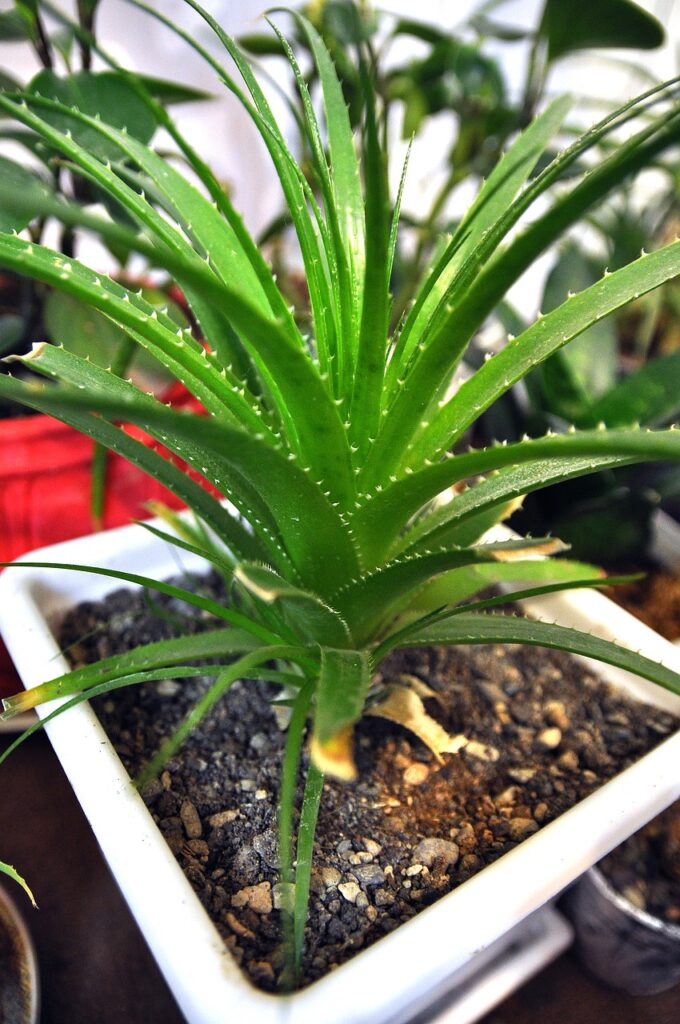Aloe Vera is a beloved plant among gardeners and plant lovers for its soothing, medicinal properties and hardy nature. Whether you’re a seasoned gardener or a newbie plant lover, this guide will help you nurture and grow a thriving Aloe Vera plant.
Why Grow Aloe Vera?
Before we dig into the how-tos, let’s talk about why Aloe Vera is such a fantastic choice for your garden or indoor plant collection:
- Medicinal Properties: Aloe Vera gel is renowned for its soothing effects on burns, cuts, and skin irritations.
- Low Maintenance: Aloe Vera is a succulent, meaning it stores water in its leaves and can survive drought conditions.
- Aesthetic Appeal: With its thick, fleshy leaves and distinctive texture, Aloe Vera adds a touch of greenery and elegance to any space.
Getting Started with Aloe Vera
Choosing the Right Pot and Soil
Choosing the right pot and soil for your Aloe Vera is crucial for its health and growth:
- Pot Selection: Use a pot with drainage holes to prevent water from sitting at the bottom, which can lead to root rot.
- Soil: Opt for a well-draining soil mix, ideally one designed for cacti and succulents. You can also create your own mix by combining standard potting soil with sand or perlite.
Planting Your Aloe Vera
Once you have the right pot and soil, it’s time to plant your Aloe Vera:
- Fill the Pot: Fill your chosen pot with the well-draining soil mix.
- Position the Plant: Place the Aloe Vera in the center, ensuring that the base of the leaves is just above the soil line.
- Backfill with Soil: Gently fill in around the plant with more soil, packing lightly to support the plant but not too tightly to impede drainage.
Watering Your Aloe Vera
One of the most common mistakes with Aloe Vera is overwatering. Here’s how to avoid that:
- Watering Schedule: Water your Aloe Vera sparingly. Let the soil to completely dry out between watering sessions. In the summertime, this might mean watering every 3-4 weeks, and even less in the winter.
- Watering Technique: To prevent rot, water the soil directly instead of the leaves. Ensure that any excess water properly drains from the pot.
Providing Adequate Light
Aloe Vera loves sunlight, but too much direct sunlight can scorch its leaves:
- Indoor Plants: Place your Aloe Vera near a window where it can receive indirect sunlight or filtered light.
- Outdoor Plants: If planting outdoors, choose a spot with partial shade to protect it from the intense midday sun.
Temperature and Humidity
Aloe Vera thrives in warm temperatures and low humidity:
- Ideal Temperature: Keep your plant in an environment where temperatures range between 55°F and 80°F.
- Winter Care: If you live in a cooler climate, bring your Aloe Vera indoors during the winter months to protect it from frost.
Fertilizing Your Aloe Vera
While Aloe Vera doesn’t require much feeding, a little boost can help it thrive:
- Fertilizer Type: Apply a balanced, water-soluble fertilizer diluted to half strength.
- Fertilizing Schedule: Fertilize sparingly, about once a year in the spring.

Common Issues and How to Fix Them
Even the hardiest plants can run into problems, Here are some common problems along with their respective solutions:
- Yellowing Leaves: Often a sign of overwatering. Let the soil dry out entirely before watering it again.
- Brown Tips: Can be caused by too much direct sunlight or dry air. Move the plant to an area with indirect light and increase humidity slightly.
- Pests: Aloe Vera can occasionally attract pests like aphids or mealy bugs. Apply insecticidal soap or neem oil for treatment.
Propagating Aloe Vera
Aloe Vera is easy to propagate, allowing you to expand your collection or share with friends:
- Identify Offsets: Look for small offshoots, or “pups,” growing around the base of the parent plant.
- Separate Pups: Gently remove the pups from the main plant, ensuring they have some roots attached.
- Potting Pups: Plant the pups in small pots with well-draining soil and care for them as you would a mature Aloe Vera plant.
Conclusion
Growing Aloe Vera is both rewarding and straightforward. With the right care, your plant will not only thrive but also provide you with a natural remedy for minor skin irritations. Ready to get started? Grab your pot and soil, and begin your Aloe Vera gardening adventure today!
Happy planting, and may your Aloe Vera flourish for years to come!

